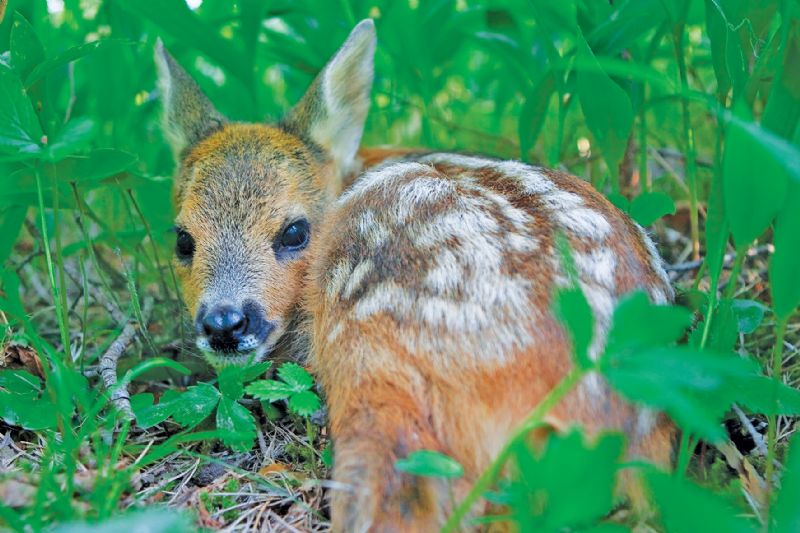- Home
- News, Articles & Reviews
We are hiring! Please click here to join our growing magazine delivery team in Gloucestershire!
Areas
Pets & Wildlife
Archive

Baby boom
All Areas > Pets & Wildlife > Wildlife Matters
Author: Lois Barnes, Posted: Monday, 25th April 2022, 09:00
From blossom and buds to the dawn chorus, spring is a wonderful time of year for new life and the promise of brighter, warmer days. You’ll likely have noticed baby lambs prancing around in the countryside, but which wildlife babies might we also spot at this time of year?
Mammals
Otters are generally solitary creatures, only coming together to breed. While they mate all year round, most pups are born between May and August. They are dependent on their parents for more than a year and usually leave at about 15 months old.
The roe deer is the most common native deer in the UK. Another species that tend to live solitary lives, their rutting (mating) season is in the summer, although the female delays implantation of the fertilised egg until the next January so that her babies are not born in the winter. She’ll give birth to two or three white-spotted fawns in May or June.
Birds
Chiffchaffs are one of the UK’s smallest birds and are mostly green-brown in colour with dark legs and a pale stripe just above their eyes. They live in woodland and parks, but you may also spot them in your garden. They nest low to the ground in dense vegetation and lay five to six eggs in May or June, which hatch after about two weeks and fledge two weeks after that.
Cuckoos are a sneaky species, as they trick other birds into raising their chicks. They mate in April and then lay a single egg in another bird’s nest, often after scaring it off so that it vacates the nest. After 11 or 12 days, the cuckoo chick hatches and pushes any other eggs out of the nest so that it gets the sole attention of the host parents. They leave the nest after about three weeks, but continue to be fed by their adoptive parents for another couple of weeks.
Amphibians
The smooth or common newt. is dark green or brown in colour with a vibrant orange, black-spotted underside, and can be found in ponds, bog gardens and marshes. They breed from February to June, with the female laying up to 300 eggs on aquatic plants. Once the larvae hatch, they metamorphose over 10 weeks into juvenile newts.
Insects
The peacock butterfly is one of the most recognisable butter-flies, with its colourful eye-spots on its upper wings. They mate in spring and females lay eggs in batches of up to 500 at a time. The caterpillars hatch after a couple of weeks and spin a communal web that they live and feed in. As they grow, they live in the open and pupate alone, emerging as adults in July.
Enjoy keeping an eye out for some of these species in your garden or local green space this spring.Other Images
Copyright © 2025 The Local Answer Limited.
Unauthorized use and/or duplication of this material without express and written permission from this site's author and/or owner is strictly prohibited. Excerpts and links may be used, provided that full and clear credit is given to The Local Answer Limited and thelocalanswer.co.uk with appropriate and specific direction to the original content.More articles you may be interested in...


© 2025 The Local Answer Limited - Registered in England and Wales - Company No. 06929408
Unit H, Churchill Industrial Estate, Churchill Road, Leckhampton, Cheltenham, GL53 7EG - VAT Registration No. 975613000You are leaving the TLA website...
You are now leaving the TLA website and are going to a website that is not operated by us. The Local Answer are not responsible for the content or availability of linked sites, and cannot accept liability if the linked site has been compromised and contains unsuitable images or other content. If you wish to proceed, please click the "Continue" button below:




